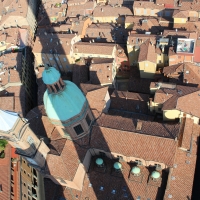
Chiesa di S. Maria della Vita
Bologna
Where:
Contacts
In the heart of Bologna, entering the historic Quadrilatero district from Piazza Maggiore through ‘via Clavature’, rich in aromas and flavors typical of the city market, the Shrine of ‘Santa Maria della Vita’ can be found. Its origin dates back to 1200, when the company of the same name was founded to take care of the sick, prisoners, sentenced to death and pilgrims. The history of the ‘Maggiore Hospital’ is linked to Santa Maria della Vita: the "Spedale Maggiore" was right next to the religious building, operating here until 1725. It was rebuilt later in Via Riva di Reno for logistical reasons and finally in via Saffi, where it is currently based. In the early 1600s, an image of the Virgin and Child was discovered on the outer wall of the church. The work was later attributed to Simone de ‘Crocifissi’ (Bologna 1355-1399). The discovery caused a huge clamor and soon it became one of the most revered icons of the city. At the end of the 17th century, following a disastrous collapse in the church, the image was moved to a safe place while it returned to public view only after 1787, when the beautiful dome, designed by Bibiena, was built. Since then, it stood in the most important place of the Sanctuary, on the High Altar. The church, with its large dome, the elegant lines of the interior and the six side chapels, represents the most important example of late Bolognese Baroque. A considerable collection of sacred works is present in the Sanctuary, including the famous sculptural group of the Lamentation over the Dead Christ (around 1463), described as a "scream of stone" by Gabriele d'Annunzio, located in the room to the right of the presbytery. Nicolò dell’Arca instilled the seven figures in the work with such vigor and expressiveness to make it to be considered one of the greatest masterpieces of Italian sculpture of all time.









